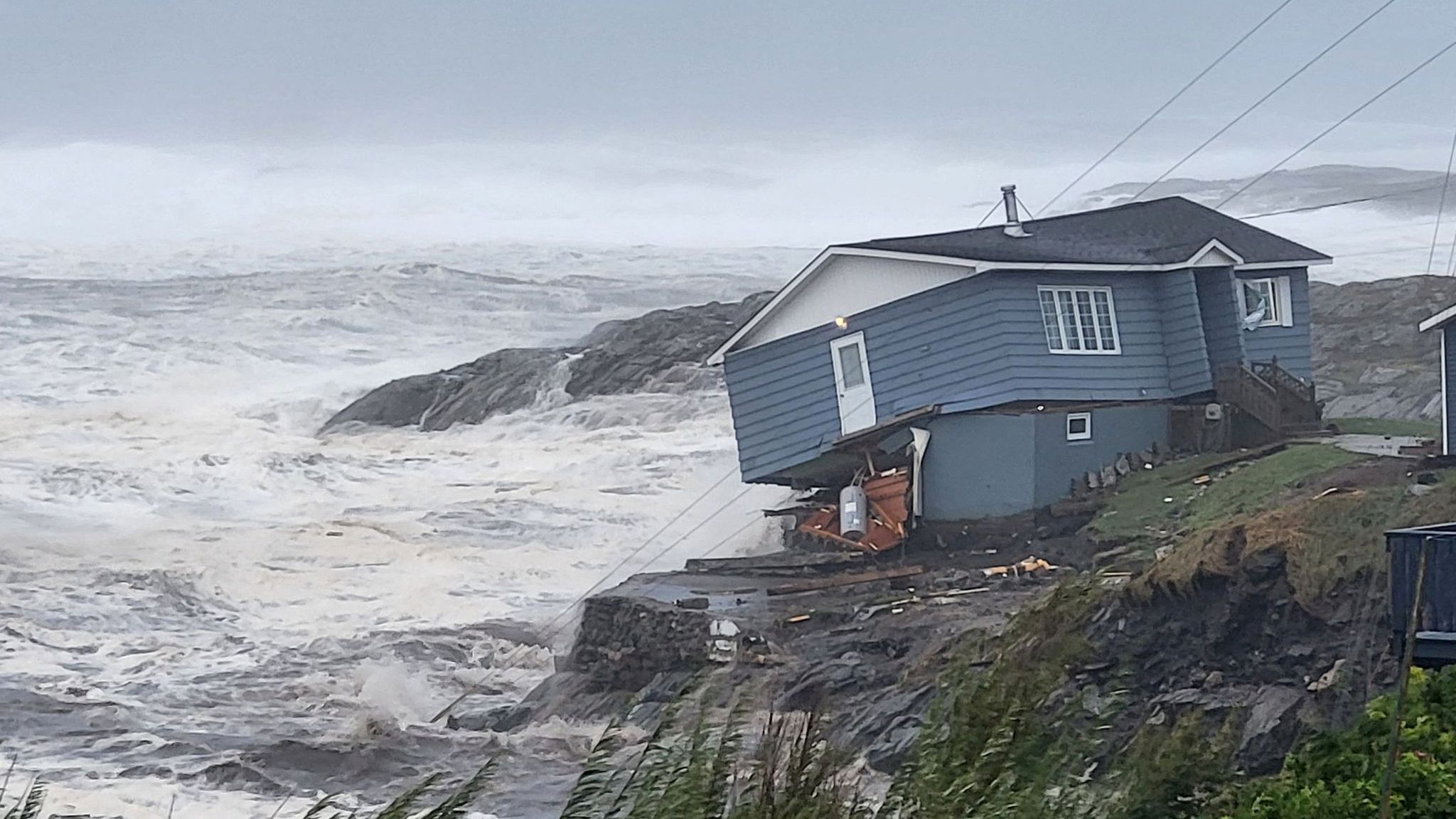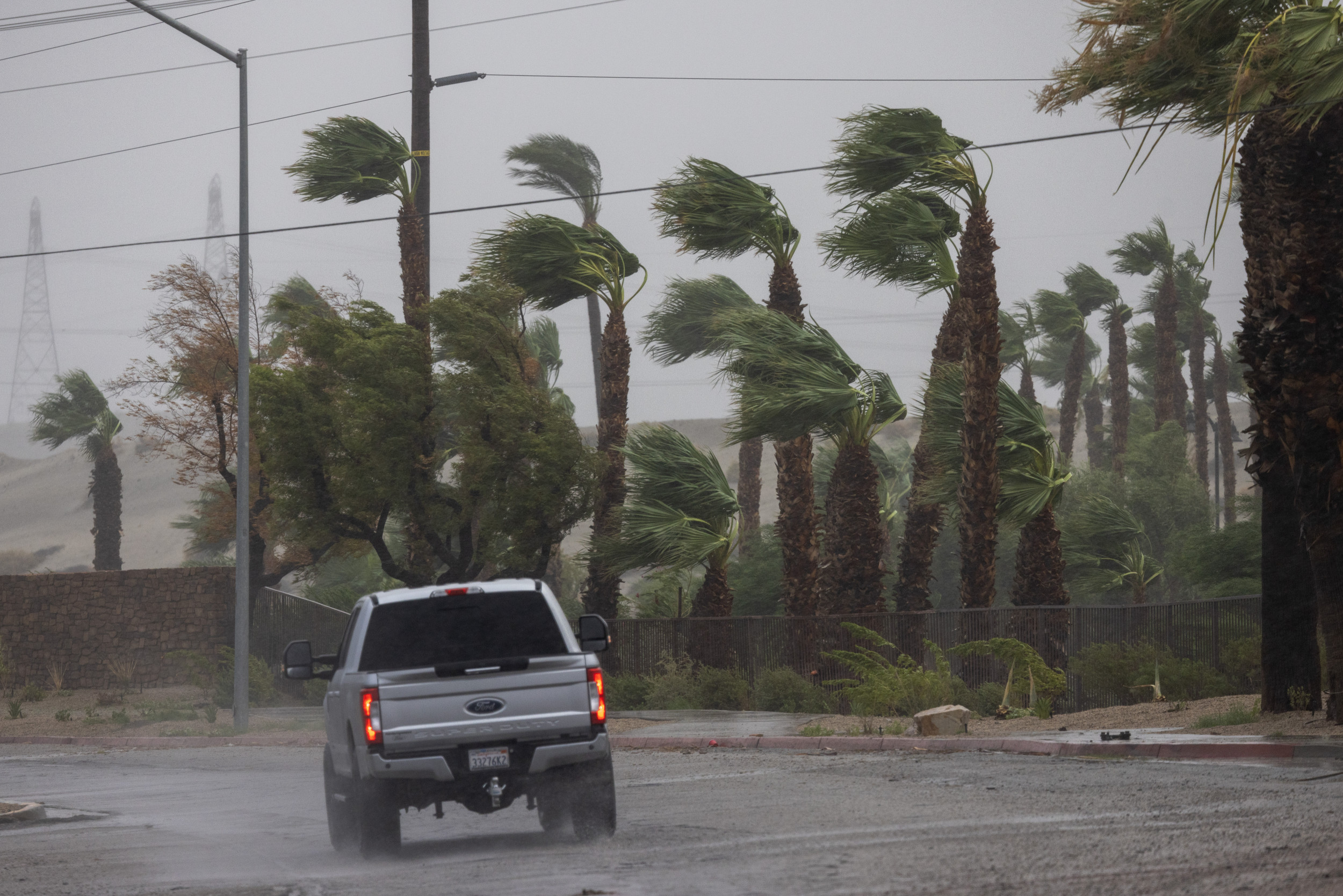Navigating The Storm: Unpacking The Rocky-Ross Funk Of Online Extremism
In the vast and often turbulent ocean of the internet, certain digital currents can create a peculiar and unsettling phenomenon, a kind of ideological "funk" that permeates online spaces. This article delves into what we term the "storm rocky-ross funk" – a metaphorical concept representing the disruptive, often negative, and deeply entrenched ideological atmosphere found within certain online communities, particularly those associated with extremism. While the term "rocky-ross funk" itself is a conceptual lens, the "storm" it refers to is very real, characterized by the propagation of divisive ideologies, the recruitment of individuals into hate groups, and the creation of echo chambers that distort understanding and promote prejudice.
Our exploration is not about promoting or legitimizing these spaces, but rather about understanding their nature, their methods, and their impact on the broader digital landscape and society. By examining the characteristics of these online environments, drawing insights from real-world examples and their stated intentions, we aim to provide readers with a clearer perspective on how such "funk" develops and spreads. Understanding this phenomenon is crucial for fostering critical media literacy, promoting genuine diversity, and safeguarding the digital commons from harmful influences that threaten the fabric of a truly inclusive society.
Table of Contents
- The Digital Echo Chamber: Origins of the "Funk"
- Anatomy of an Online "Storm": How Ideologies Take Root
- Deconstructing the "Rocky-Ross Funk": Ideological Underpinnings
- The Recruitment Pipeline: Spreading the "Funk" to New Audiences
- Navigating the Digital Landscape: Critical Engagement and Awareness
- Beyond the "Storm": Fostering True Diversity and Inclusivity
- Conclusion: Weathering the "Storm Rocky-Ross Funk"
The Digital Echo Chamber: Origins of the "Funk"
The internet, for all its promise of global connection and information access, has also inadvertently provided fertile ground for the growth of echo chambers and the propagation of divisive ideologies. The "storm rocky-ross funk" often originates in these self-reinforcing digital environments, where like-minded individuals, often sharing extreme views, congregate and reinforce each other's beliefs, shutting out dissenting opinions and external realities. Platforms like Stormfront, for instance, explicitly state their purpose as "News and discussion for racial realists and idealists, supporting true diversity and the right of all peoples to a homeland, including white people." This framing, while seemingly innocuous to the uninitiated, is a classic example of how extremist narratives are presented under a veneer of legitimacy, attracting individuals who may feel marginalized or disaffected.
- Spanish Center In Jumeirah
- Leila Arcieri Net Worth
- Marquette University Cheerleaders
- Brow Lamination Lubbock
- Rose Nest At The Beach
The origins of this "funk" can be traced back to the early days of the internet, when fringe groups found new avenues to communicate and organize beyond the reach of mainstream media and public scrutiny. These online spaces evolved from simple bulletin boards to sophisticated forums, radio broadcasts, and even attempts at integration with modern web platforms like WordPress. The anonymity and perceived freedom of online discourse allowed these groups to disseminate their ideologies, recruit new members, and coordinate activities with a reach unimaginable in the pre-digital era. The very structure of these platforms, designed for open discussion, paradoxically facilitates the creation of closed systems where harmful narratives can flourish unchecked, contributing to the overall "storm rocky-ross funk" that can impact unsuspecting users.
Anatomy of an Online "Storm": How Ideologies Take Root
To truly grasp the "storm rocky-ross funk," it's essential to understand the operational mechanics of the platforms that generate it. These online "storms" are not random occurrences but are meticulously constructed environments designed to cultivate and spread specific ideologies. They often employ a multi-faceted approach, combining traditional forum discussions with media outreach and community-building efforts. The data provided offers glimpses into these mechanisms, from open discussions to structured broadcasts.
The Role of Forums and Discussion Boards
Forums are the bedrock of many extremist online communities. They provide a space for users to engage in detailed discussions, share articles, and reinforce shared beliefs. Phrases like "Has anyone on Stormfront ever played or heard of Starcraft, The original came out in 1998" illustrate how these forums blend seemingly innocuous topics (like video games) with their core ideological discussions. This tactic helps to normalize the environment, making it appear less overtly extreme to new visitors. Discussions can range from daily life to deeply ideological topics, all filtered through the specific lens of the platform's agenda. This constant reinforcement of narratives, often devoid of external criticism, solidifies the "storm rocky-ross funk" within its participants.
- Repeat Offender Clothing
- El Ojo De San Pedro
- Haute Couture Nails
- Splash Beach Bar Exuma
- Jayson Tatum Mustang
The curated nature of these discussions means that certain viewpoints are actively promoted while others are suppressed. This creates an echo chamber where users are constantly exposed to information that confirms their biases, making it difficult for them to engage with alternative perspectives or critical thinking. The "news and discussion" aspect of these sites is highly selective, presenting information that supports their particular worldview, often distorting facts or promoting conspiracy theories.
Broadcasting Beliefs: Online Radio and Media
Beyond static forums, many extremist platforms utilize dynamic media formats like online radio to reach a wider audience and provide a more personal connection with their listeners. "Stormfront Radio with Don Black, co-hosts Roy, Don Advo, Paul Fromm and Jay, along with callers" is a prime example. Radio shows allow for live interaction, Q&A sessions, and the dissemination of propaganda in an auditory format, which can be highly effective in conveying emotion and fostering a sense of community. These broadcasts often feature prominent figures within the movement, lending an air of authority and expertise to their messages.
The use of media like radio signifies a strategic effort to professionalize and expand the reach of these ideologies. It moves beyond simple text-based forums into a more engaging and accessible format, allowing the "storm rocky-ross funk" to penetrate different layers of media consumption. This multi-platform approach ensures that the message is delivered consistently across various channels, reinforcing its impact and drawing in new adherents who might prefer listening over reading.
Deconstructing the "Rocky-Ross Funk": Ideological Underpinnings
The "storm rocky-ross funk" is not just about the platforms; it's fundamentally about the ideologies they propagate. These ideologies are often complex, drawing on a mix of historical revisionism, pseudoscientific claims, and conspiracy theories. The core tenets, as hinted at in the provided data, revolve around concepts like "racial realists and idealists," "true diversity," and the "right of all peoples to a homeland, including white people." While these phrases might sound benign on the surface, they are often euphemisms for deeply problematic and exclusionary beliefs.
For instance, "racial realism" is a term often used by white supremacists to justify beliefs in racial hierarchies, claiming that differences in intelligence, behavior, and social outcomes are primarily due to inherent biological differences between races. This concept directly contradicts mainstream scientific consensus and is used to rationalize discrimination and prejudice. Similarly, the call for "true diversity" is often inverted to mean racial segregation or the preservation of "white homelands," rather than genuine inclusion and multiculturalism. This manipulation of language is a key characteristic of the "storm rocky-ross funk," making it challenging for outsiders to immediately discern the underlying hateful intent.
Furthermore, these ideologies often foster a sense of victimhood and grievance, portraying their own group as being under attack or marginalized by external forces. This narrative fuels resentment and justifies aggression towards perceived adversaries. The internal discourse, exemplified by comments such as those disparaging certain racial groups, demonstrates the deeply ingrained prejudice that forms the core of this "funk." It's a system designed to validate and amplify biases, creating a self-perpetuating cycle of intolerance.
The Recruitment Pipeline: Spreading the "Funk" to New Audiences
One of the most concerning aspects of the "storm rocky-ross funk" is its active recruitment efforts. These online spaces are not merely discussion forums; they are also pipelines designed to draw in new members and expand the reach of extremist organizations. The data explicitly mentions "Trinity White Knights of the Ku Klux Klan are currently recruiting in Kentucky, Indiana, Ohio, and Tennessee. We fellowship with many other Klans across..." This demonstrates a clear intent to move from online discussion to real-world organization and action.
Targeted Outreach and Community Building
Recruitment often begins subtly, through discussions that gradually introduce more extreme ideas. Users who show receptiveness are then encouraged to participate more actively, perhaps by joining private groups or attending offline events. The mention of "fellowship with many other Klans" indicates a networked approach to recruitment, where various chapters and organizations collaborate to expand their collective influence. This creates a sense of belonging and camaraderie for new recruits, fulfilling a human need for community that is then exploited to indoctrinate them into harmful ideologies. The online environment provides a low-barrier entry point, allowing individuals to explore these ideas from the safety of their homes before committing to real-world involvement, making the "storm rocky-ross funk" particularly insidious.
The Illusion of "Free Deals" and Normalcy
Interestingly, the data also includes seemingly unrelated mentions like "Occasionally you can find great deals and free games depending on where you look. Typically the two big platforms for PC gaming are Steam and Epic Games." While this might appear out of place, it highlights a common tactic used by extremist groups: attempting to blend their content with everyday interests to appear more normal and approachable. By discussing topics like video games or "free deals," they create a facade of normalcy that can draw in unsuspecting individuals who are simply looking for gaming tips or good bargains. Once inside, they are gradually exposed to the underlying ideological "funk." This tactic of normalization makes the detection and countering of the "storm rocky-ross funk" even more challenging, as it hides in plain sight, leveraging common interests to mask its true agenda.
This subtle infiltration is a significant concern for parents, educators, and anyone interested in online safety. It underscores the importance of critical thinking and media literacy, as the path to radicalization can begin with seemingly innocuous online interactions.
Navigating the Digital Landscape: Critical Engagement and Awareness
Understanding the "storm rocky-ross funk" is the first step; navigating it safely and effectively is the next. In an era where information overload is the norm, developing strong critical thinking skills is paramount. This means not taking information at face value, especially from sources that promote a singular, unchallenged narrative. Always question the source, look for corroborating evidence from diverse and reputable outlets, and be wary of content that evokes strong emotional responses without providing factual backing.
For parents and educators, fostering media literacy in younger generations is crucial. Teach children and teenagers how to identify bias, recognize propaganda, and understand the dangers of echo chambers. Encourage open dialogue about what they encounter online and create a safe space for them to ask questions about disturbing content. Furthermore, be aware of the subtle ways in which extremist groups attempt to normalize their presence, such as by discussing gaming or other common interests. The "storm rocky-ross funk" thrives on anonymity and unchallenged narratives; shining a light on its mechanisms can significantly diminish its power.
Support organizations dedicated to countering hate speech and promoting digital citizenship. Report harmful content when encountered, adhering to platform guidelines and legal frameworks. While the principle of free speech is vital, it does not extend to incitement to violence, harassment, or defamation. Understanding these distinctions is key to maintaining a healthy and safe online environment for everyone.
Beyond the "Storm": Fostering True Diversity and Inclusivity
The antidote to the "storm rocky-ross funk" lies in actively promoting and celebrating genuine diversity and inclusivity. While platforms like Stormfront claim to support "true diversity" and the "right of all peoples to a homeland, including white people," their interpretation often leads to exclusionary practices and the denial of rights for others. True diversity, in contrast, embraces the richness that comes from a multitude of backgrounds, cultures, and perspectives coexisting and thriving together.
This means actively challenging narratives that seek to divide based on race, religion, gender, or any other characteristic. It involves advocating for policies and practices that ensure equitable opportunities and representation for all members of society. In the digital realm, this translates to supporting platforms and communities that foster respectful dialogue, encourage empathy, and provide spaces for constructive engagement across differences. It means building bridges, not walls, in the online world.
The fight against the "storm rocky-ross funk" is not just about suppressing hate; it's about cultivating a vibrant, inclusive alternative. By actively participating in positive online communities, sharing diverse stories, and championing human rights, we can collectively dilute the influence of harmful ideologies. This proactive approach strengthens the digital ecosystem, making it more resilient to the divisive tactics employed by extremist groups and ensuring that the internet remains a force for good, promoting understanding rather than prejudice.
Conclusion: Weathering the "Storm Rocky-Ross Funk"
The "storm rocky-ross funk" represents a significant challenge in our interconnected world – the pervasive, unsettling ideological current generated by extremist online communities. From the seemingly benign discussions on forums to the organized recruitment efforts of groups like the KKK, these platforms are designed to cultivate and spread divisive narratives, often under the guise of "racial realism" or "true diversity." The insidious nature of this "funk" lies in its ability to blend into the digital landscape, leveraging common interests to draw in unsuspecting individuals and subtly indoctrinate them into harmful ideologies.
However, understanding this phenomenon is the first step towards mitigating its impact. By recognizing the tactics employed by these groups – their use of echo chambers, their multi-platform media strategies, and their deceptive recruitment methods – we can better equip ourselves and future generations to navigate the digital world safely. The fight against the "storm rocky-ross funk" is not just about countering hate speech; it's about fostering critical thinking, promoting media literacy, and actively championing genuine diversity and inclusivity in both online and offline spaces.
We encourage you to remain vigilant, question information, and seek out diverse perspectives. Engage in respectful dialogue, support initiatives that promote digital literacy, and report harmful content when encountered. By doing so, we can collectively work towards a more resilient, inclusive, and understanding digital future, ensuring that the internet remains a powerful tool for connection and progress, rather than a breeding ground for division. Share this article to raise awareness, and explore other resources on our site for further insights into online safety and media literacy.
- Chopit Chopping Board
- Candle Making Class Orlando
- Knoxville Survival Swim Academy
- Happy Buddha Hostel Medellin
- Martin Family Orchards

2560x1440 Resolution 4K Storm Photography 2022 1440P Resolution

Florida emergency declared with Tropical Storm Ian set to strengthen as

Tropical Storm Hilary Tracker, Path Update as Rainfall Due for Las